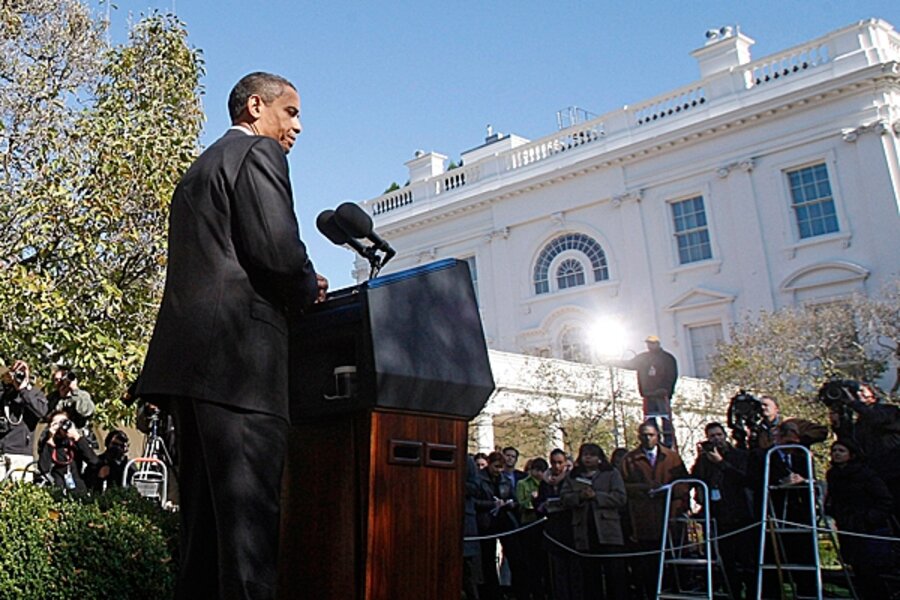Highest unemployment rate in 26 years: Obama’s jobs challenge
Loading...
America's unemployment rate crossed the 10 percent mark Friday, as the economy continued to shed jobs despite recent signs of improvement.
The news underscored that job creation is the big political imperative for President Obama and Congress as 2010 elections loom on the horizon.
The jobless rate jumped to 10.2 percent in October, up from 9.8 percent a month before, the Labor Department reported. The economy lost 190,000 jobs last month, the report also said. The job losses were broad-based, spanning from retail to construction, from manufacturing to entertainment.
"I won't rest until America prospers once again," Mr. Obama said at a podium in the White House Rose Garden.
The economic news came as the president signed a bill to extend unemployment benefits for jobless Americans and also to expand a tax credit for home buyers. The White House, he said, is considering additional job-creation programs, beyond the $787 billion stimulus that's already under way. Among the possibilities: more direct federal spending for things like road building, tax breaks for businesses, and measures to make it easier for small employers to get loans.
Economists see signs that the economy and job market are beginning to turn toward recovery. But such turns often take many months, and the worry in the current cycle is that the strains of the credit crisis will make a jobs rebound harder than usual.
According to top White House economist Christina Romer, the jump in unemployment partly reflects a "typical lag" between when economic growth resumes – as it did in the third quarter – and when firms start hiring again. But she added, "Having the unemployment rate reach double digits is a stark reminder of how much work remains to be done before American families see the job gains and reduced unemployment that they need and deserve.”
The labor report blended ongoing challenges with some signs of progress. Among the more-positive trends:
• Employment at temporary-help services rose by more than 33,700 jobs in October. Such a development is often seen as a precursor of permanent hiring in the economy. The number of these jobs had been relatively flat for several months.
• The job losses for two prior months were revised downward. The new estimates are that in September, America lost 219,000 jobs (down from a prior estimate of 263,000) and that in August, job losses totaled 154,000 (down from 201,000 reported earlier).
• Government jobs held steady overall, despite the sharp slide in tax revenues this year. Federal stimulus efforts are at least partially offsetting cutbacks at the state and local level. Local governments pared 16,000 jobs, while state payrolls were unchanged and the federal government added 16,000 jobs.
• The healthcare sector, also supported by government programs and stimulus money, has continued to add jobs throughout the year.
On the negative side:
• The average workweek didn't budge upward from 33 hours. A rise there would be another sign that employers will soon need to hire more workers.
• An alternative gauge of unemployment jumped even more in October than the official jobless rate. This other measure includes people who are too discouraged to apply for jobs or who are working part time because they can't find full-time jobs. This rate rose to 17.5 percent of the workforce, up from 17 percent in September and 12 percent a year ago.
• People are staying unemployed longer than in previous recessions going back to 1980. This suggests that the road back to fuller employment will involve structural changes in the economy. For workers, that often means retraining and not just waiting for an old job to reappear.
-----
See also:
After dismal jobs report, unemployment rate could hit postwar high
What the $6,500 homebuyer tax credit means for you
Home-buyer tax credit: more questions answered
-----
Follow us on Twitter.





